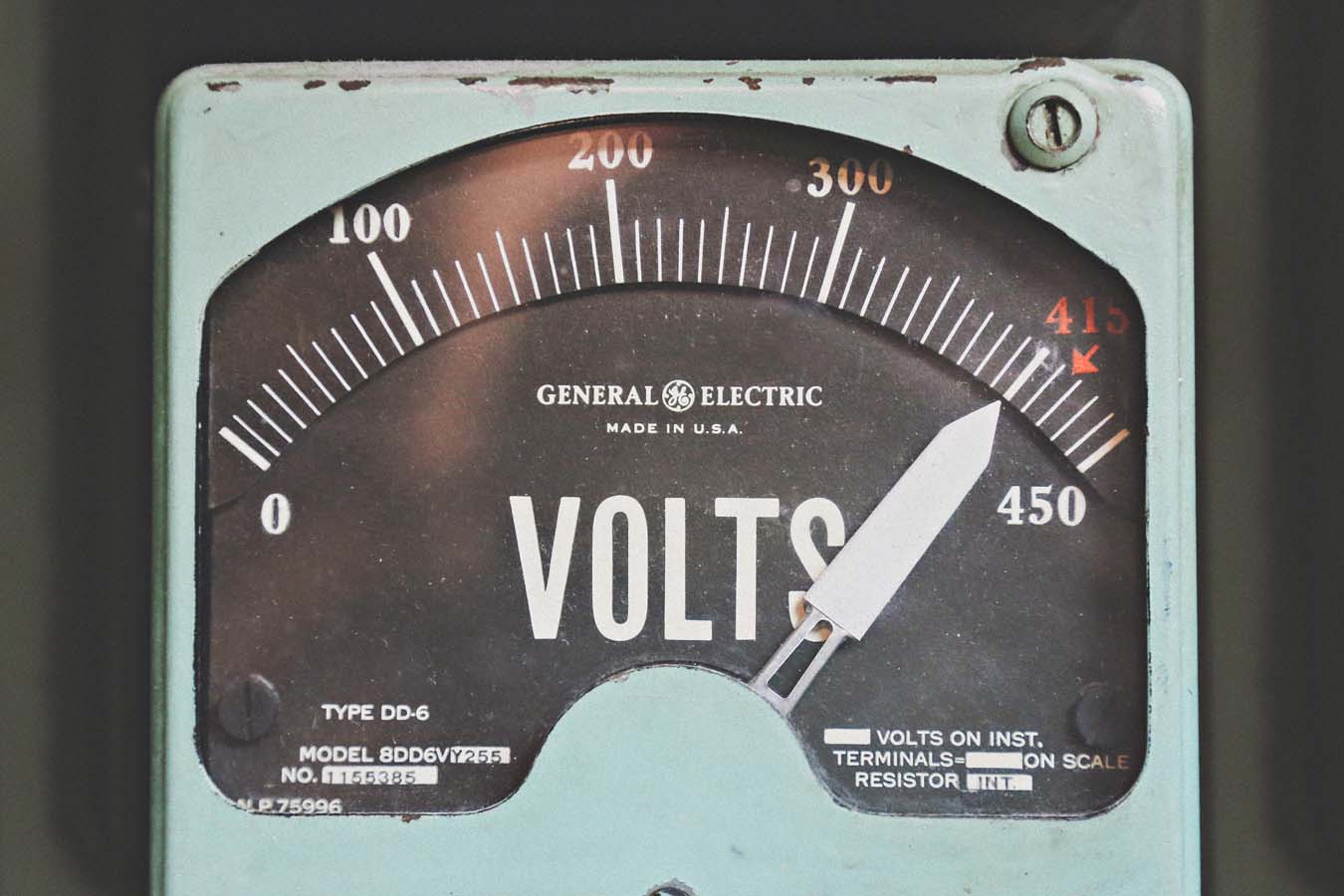With people getting more and more tethered to their phones and other smart devices, it’s going to be hard to convince them not to carry them along when they go out into nature, such as when camping. And yet these devices require electricity to run, and electricity to recharge when they run out of battery power, so a power source must be carried along. That’s where generators come along.
This brings us to the whole process of shopping for a generator, which can be quite tenuous. You might not think a generator should be something complicated, and yet even this field has not been spared by the waves of innovation that seem to be sweeping everything along with them in the 21st century. There are seemingly countless options when it comes to generators on the market.
Most consumers, when they are faced by this avalanche of choice, are left utterly confused and typically end up either making the wrong choice or lucking out by coincidentally picking the right one. Okay, maybe not always coincidentally; sometimes they get the right recommendations from friends and experts.
The important thing to note here is that you should ultimately pick the right generator according to your needs, which is why it is important to know a little about what factors to consider when picking out a generator to purchase. A large chunk of these factors will deal with choosing between an inverter generator and a conventional one.
It’s hard to know which one of the two is the best option for you if you don’t know an awful lot about generators. Truth be told, there are vast differences between these two categories of generators, and that’s what we’re going to talk about today. Hopefully, by the end of this article, you will be better placed to choose the right one for your needs and you will be a happy customer (and I will be a happy blogger because I’ll have done my job)!
What is an inverter generator?
Generators have become notorious over the years for their bulkiness and noisiness.
Considering the kind of generators we saw a lot of while growing up, for the longest time the mention of generators the image conjured up in our mind was a large frame and wheels, with this monster of a machine sitting in it.
Just by looking at it you could tell that it was going to be very heavy to carry and very noisy to be around. They were also notorious for giving fluctuating power, which isn’t a problem for things that aren’t sensitive to the fluctuations in electricity supplied to them but terrible for our modern smart devices.
While generators are supposed to be a great source of backup power, they weren’t doing a great job for the longest time.
Fortunately, as advancements have come along, there have come new generators on the market that seemed to have solved all of the problems faced by the predecessors in one swoop.
The inverter generator is single-handedly re-rendering the image we typically have of generators to something else entirely. They are small, light, quite, and produce clean electricity (no fluctuations). They’re also quite a bit pricey compared to conventional generators, but we’ll talk about that in a bit.
What is a conventional generator?
When most people think or talk of a generator, a conventional generator is really what they’re talking about. It has been around for a long time and runs on roughly the same principles today as it did when it first came on the market.
Basically, it involves a source of energy, which is either gasoline, diesel, or propane, and features a motor connected to an alternator. The energy source gets the motor turning, which gets the alternator to produce electricity.
What is considered a conventional portable generator?
For conventional generators, there is a huge correlation between the size of the fuel tank and how much power output the generator can produce (as well as how long it can run).
To make them portable (which is why you always hear of them described as portable conventional generators), manufacturers often fix wheels and handles to them. They’re still pretty heavy though, especially as the fuel capacity increases.
How does a conventional generator work?
As mentioned earlier, the most important components of a conventional generator are the energy source, the motor, and the alternator. In this case the fuel is typically gas, diesel, or propane.
These are not the only fuel types, though they are by far the most common ones. Many conventional generators will run on one or the other of these, though there are hybrid generators which can run on more than one type of fuel. These offer the advantage that you can use whichever is available at the time.
The most important characteristic of the conventional generator is the speed of the engine. Most of them have a motor that runs at about 3600 rpm (revolutions per minute). At that rate, they are capable of producing 120 volts of electricity at a frequency of 60 Hz. This is alternating current, of course.
On the one hand, such generators are pretty noisy and bulky, as already mentioned, and that is bad enough. But if that were all that was wrong with them, perhaps we might still have used them on our smartphones.
However, they do have another major problem that makes it dangerous to use them to power smart TVs, charge smart phones, and power basically anything that is very sensitive to fluctuations in electricity: they fluctuate.
The machine in the engine cannot maintain the 3600 rpm consistently (or indefinitely, for that matter). This can be for a whole host of reasons. It could be that friction has built up in the motor’s belt, or the fuel efficiency reduces over time as the fuel is consumed, or pretty much anything else.
The point is that, being a complex system where energy is directly converted to AC current via a mechanical system (which means it’s subject to a ton of hidden variables), you’re not going to get a consistent rpm. As a result, the voltage of the resulting current, as well as its frequency, are going to fluctuate.
There’s a name in electrical engineering for these fluctuations. They are collectively known as harmonic distortion.
AC current is modeled as sine waves (you know, those cool wavy lines that you saw in trigonometry class), and a major characteristic of the sine waves from conventional generators is that they have varying amplitudes (different heights from one wave to the next) and varying wavelengths (different widths for the waves). As a result, they are considered unclean electricity.
Such unclean electricity isn’t bad for your lighting, older fridges, and older washing machines, but it would be disastrous for electronic devices like your digital camera, smart phone, laptop, smart TV, and so on, which is why it’s dangerous to attach them directly to such a power source.
Another interesting thing to note is that the inconsistent rpm is also why conventional generators are so noisy.
How does an inverter generator work?
Inverter generators sort of pick up from where conventional generators drop off, with more complicated steps added to the process.
To understand how an inverter generator works, let us go back to how electricity is produces by a conventional generator.
The generator converts the fuel source to energy, which causes the motor to rotate, and since the motor is connected to the alternator, this causes the alternator to produce electricity at a set frequency and voltage, depending on the rotational speed of the motor.
An inverter sort of picks up from here. It adds something called a rectifier, which converts the AC power of the generator to DC power.
Along the way, the DC power is passed through some capacitors to smooth it out so it produces more consistent sine waves on the other end. The DC power is then passed through an inverter (the source of the name of the generator), which converts it back to AC power, and that is supplied to your device.
On top of that, many inverter generators include microprocessors that monitor the load (how much power is actually being drawn from the generator based on how many appliances and devices you have connected) and adjust the speed of the motor accordingly.
That means the motor doesn’t have to always run at the high 3600 rpm rate. Since the electricity is taken through extra steps, getting converted to DC then back to AC, you can still get the same 120 volt 60 Hz AC power without having to rely too much on motor rpm.
The microprocessor only increases rpm when more power is required and reduces it when less power is needed. The by-product is that the inverter generator is quiet most of the time, maintaining noise levels below 60 decibels, unlike its conventional cousin.
There are also design aspects that enable the inverter to maintain a quiet operation, such as an enclosed encasing, mufflers, and the like, but most of it is their ability to alter the rpm of the motor and keep it low most of the time.
Another interesting thing about inverter generators is that they can draw power from virtually any power source.
The idea of the inverter is actually older than the inverter generator. Inverters can draw power from 12 volt DC power from a battery and convert it into 120 volt AC power, and that is exactly what happens in your car.
Inverter generators can therefore be powered by battery, or by solar power, as in solar powered generators, and so on. However, because of the larger power capacity of fossil fuels, most inverter generators are powered by fossil fuels. Solar and battery powered inverter generators are typically used for less demanding activities.
What are the key differences between an inverter generator and a conventional portable generator?
Current
The main difference between conventional portable generators and inverter generators is the quality of electricity produced. The conventional generator will convert fossil fuel energy directly to AC current, which is inherently unstable due to the mechanics of the conventional portable generator. The inverter generator, on the other hand, will first convert the fossil fuel energy to high frequency AC, then to DC, where all of the smoothing happens, then back to a more stable AC current via the inverter.
What makes the inverter generator stand out from the conventional portable generator is the quality of its stable sine wave. This clean electricity is at par with what you get from the power grid as the harmonic distortion has been utterly minimized. It is therefore completely safe for your electronics.
The conventional portable generator, on the other hand, has unclean electricity, with a lot more variation in its sine wave due to harmonic distortion. While it can still be used for the majority of electrical appliances, it is not ideal for anything with a microprocessor inside it.
Fuel Efficiency / Run Time
An interesting advantage that conventional portable generators have over inverter generators is that they are able to produce a lot more power than inverter generators. This is partly because they have larger fuel tanks on average (it’s what makes inverter generators more portable than conventional portable generators) and partly because of slight mechanical differences in the way the electricity is produced (remember that inverter generators try to keep the motor running at the lowest possible rpm needed to power whatever is connected to the generator while the conventional portable generator’s motor is always running at maximum rpm).
That said, inverter generators are far more fuel efficient than conventional portable generators. Since the engine of the inverter generator keeps adapting to the load on it, it will always produce just the right amount of power (and consume just the right amount of fuel), something which a conventional portable generator is incapable of.
Coming full circle, this fuel efficiency is the main reason why inverter generators have smaller fuel tanks than conventional portable generators to begin with. Since they are more efficient, they need less fuel to run for the same amount of time as a comparable conventional generator and so can afford to be smaller.
Conventional generators are larger precisely because they cannot be as fuel efficient as inverter generators. The by-product is that the larger fuel tank allows for a larger power output (some conventional generators are capable of powering entire commercial buildings and have power outputs of tens of thousands of watts).
This difference in power is a common factor in purchasing decisions. The average power for an inverter generator is anywhere from 1000 watts to 5000 watts. Conventional generators can easily exceed 10000 watts. It all depends on how much power you really need at the end of the day.
Portability
As mentioned above, inverter generators don’t need fuel tanks as large as conventional portable generators. They are therefore more portable. Another reason they are more portable is that they also don’t depend solely on fossil fuels like conventional portable generators. They can be battery powered or solar powered, which allows for some really small (albeit far less powerful) inverter generators.
For conventional portable generators, a lot of the tradeoff is between fuel capacity and portability. The larger the fuel tank, the larger the engine, the larger the generator, the more material is required to house the generator. All this is adds up and you end up with a generator that is much bulkier and heavier than your average inverter generator.
Manufacturers try to work around this by fixing wheels and handles to the generators so they can be pulled along. However, with weights commonly spilling over 100 pounds, these are still formidable giants to haul around.
Inverter tanks have the luxury of smaller fuel tanks, which means the engines don’t need to be as large. They are therefore much lighter and smaller. Most of them will weigh between 40 pounds and 70 pounds.
Noise Level
Perhaps the most annoying thing about conventional portable generators is just how noisy they are. This is mainly because the motor is constantly running at maximum rpm (and inconsistently at that, exacerbating the situation). Even with efforts made in the design to minimize the noise, it will still be high.
By comparison, inverter generators run at a steady rpm, and can also reduce the rpm as required to provide just enough power to match the load, which removes most of the noise.
Most manufacturers will mention how much noise to expect from a generator in their product descriptions. This is at either half load (Half of the generator’s full power output) or quarter load (a quarter of the generator’s full power output). For most inverter generators, this is 60 decibels and below, which is far lower than the 80+ decibels of conventional generators.
Parallel Connections
A really cool feature that is unique to inverter generators is their ability to be connected in parallel. With this feature, you can get to inverter generators of the same model, pair them up, and get more power. If you need 4000 watts of power, you can just connect 2 2000-watt inverter generators in parallel.
This isn’t something you can do with conventional portable generators. They have unique output wires and aren’t built to be connected in parallel. Considering their higher power capacities, there’s probably no need to do this anyway. A 4000 watt conventional generator is probably cheaper (but heavier) than 2 2000-watt inverter generators.
Emissions
Because of their superior fuel efficiency, and the fact that they can be used with battery packs and solar cells, inverter generators produce fewer emissions than conventional portable generators. This is important, partly because different states have different regulations on the acceptable level of greenhouse gas emissions from generators, especially if you plan on using them inside natural reserves and national parks, and partly because it’s a good thing to not want to kill the earth.
Price
Here conventional generators beat inverter generators hands down. Conventional portable generators are much cheaper than inverter generators and are more affordable when you need a lot of power. Inverter generators are more expensive because of the more advanced technology used in them compared to the much simpler mechanics of conventional portable generators.
When to choose an inverter generator
The major advantages of inverter generators are their fuel efficiency, safety for electrical devices with microprocessors, light weight, silence, and environmental friendliness.
For all of this, you will have to settle for a higher price tag and less overall power output.
With this particular mix of advantages and disadvantages, it is best to get an inverter generator when you only need it occasionally and for simple activities, such as camping.
If you don’t have high power demands and need fuel efficiency and clean energy, and have deep pockets, an inverter generator will work for you.
When to choose a conventional generator
Perhaps the two greatest advantages of conventional generators are that they produce more power and are cheaper. For that, however, you will have to contend with their noisiness, bulkiness, heaviness, and higher emissions.
These beasts are best used when power outages are common and backup is needed, or for worksites where power demands are high.
Which is better, an inverter generator or conventional portable generator?
It all depends on what your needs are. If you intend to use the generator as a large power backup for your home when a power outage occurs, and have high power demands, or if you’re running it at a work site, then a conventional generator is probably the better and cheaper option.
If you want something simple for your camping trip that isn’t too noisy and can charge your DSLR camera, smartphone, and laptop, then an inverter generator makes more sense. The most important questions are:
- How much power do you need?
- What kind of devices do you need to power?
Summary
And with that we come to the end of our article. As you can see, despite the many improvements inverter generators bring to the table, there is still a place for conventional portable generators, so they are still strongly in the market.
However, inverter generators broaden the horizons for how much we can do with generators, and help us to make life a lot easier and more pleasant.
Hopefully by now you have a good idea which one is best for you, and you will be making more informed purchasing decisions.




